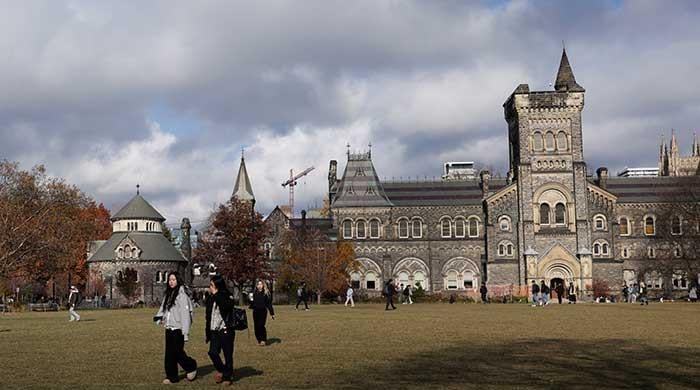OpenAI launches GPT-5 as AI industry seeks return on investment
Release comes as world's biggest AI developers dramatically raise capital expenditures to pay for AI data centres
August 07, 2025

OpenAI launched on Thursday its GPT-5 artificial intelligence model, the highly anticipated latest instalment of a technology that has helped transform global business and culture.
OpenAI's GPT models are the AI technology that powers the popular ChatGPT chatbot, and GPT-5 will be available to all 700 million ChatGPT users, OpenAI said.
The big question is whether the company that kicked off the generative AI frenzy will be capable of continuing to drive significant technological advancements that attract enterprise-level users to justify the enormous sums of money it is investing to fuel these developments.
The release comes at a critical time for the AI industry. The world's biggest AI developers — Alphabet, Meta, Amazon, and Microsoft, which back OpenAI — have dramatically increased capital expenditures to pay for AI data centres, nourishing investor hopes for great returns. These four companies expect to spend nearly $400 billion this fiscal year in total.
OpenAI is now in early discussions to allow employees to cash out at a $500 billion valuation, a huge step-up from its current $300 billion valuation. Top AI researchers now command $100 million signing bonuses.
"So far, business spending on AI has been pretty weak, while consumer spending on AI has been fairly robust because people love to chat with ChatGPT," said economics writer Noah Smith. "But the consumer spending on AI just isn't going to be nearly enough to justify all the money that is being spent on AI data centres."
OpenAI is emphasising GPT-5's enterprise prowess. In addition to software development, the company said GPT-5 excels in writing, health-related queries, and finance.
"GPT-5 is really the first time that I think one of our mainline models has felt like you can ask a legitimate expert, a PhD-level expert, anything," OpenAI CEO Sam Altman said at a press briefing.
"One of the coolest things it can do is write you good, instantaneous software. This idea of software on demand is going to be one of the defining features of the GPT-5 era."
One key measure of success is whether the step up from GPT-4 to GPT-5 is on par with the research lab's previous improvements. Two early reviewers told Reuters that while the new model impressed them with its ability to code and solve science and math problems, they believe the leap from GPT-4 to GPT-5 was not as large as OpenAI's prior improvements.
More thinking
Nearly three years ago, ChatGPT introduced the world to generative AI, dazzling users with its ability to write humanlike prose and poetry, quickly becoming one of the fastest-growing apps ever.
In March 2023, OpenAI followed up ChatGPT with the release of GPT-4, a large language model that made huge leaps forward in intelligence. While GPT-3.5, an earlier version, received a bar exam score in the bottom 10%, GPT-4 passed the simulated bar exam in the top 10%.
GPT-4’s leap was based on more compute power and data, and the company was hoping that “scaling up” in a similar way would consistently lead to improved AI models.
But OpenAI ran into issues scaling up. One problem was the data wall the company ran into, and OpenAI's former chief scientist Ilya Sutskever said last year that while processing power was growing, the amount of data was not.
He was referring to the fact that large language models are trained on massive datasets that scrape the entire internet, and AI labs have no other options for large troves of human-generated textual data.
Apart from the lack of data, another problem was that ‘training runs’ for large models are more likely to have hardware-induced failures given how complicated the system is, and researchers may not know the eventual performance of the models until the end of the run, which can take months.
At the same time, OpenAI discovered another route to smarter AI, called “test-time compute,” a way to have the AI model spend more time computing power "thinking" about each question, allowing it to solve challenging tasks such as math or complex operations that demand advanced reasoning and decision-making.
GPT-5 acts as a router, meaning if a user asks GPT-5 a particularly hard problem, it will use test-time compute to answer the question.
This is the first time the general public will have access to OpenAI's test-time compute technology, something that Altman said is important to the company's mission to build AI that benefits all of humanity.
Altman believes the current investment in AI is still inadequate.
"We need to build a lot more infrastructure globally to have AI locally available in all these markets," said Altman.









